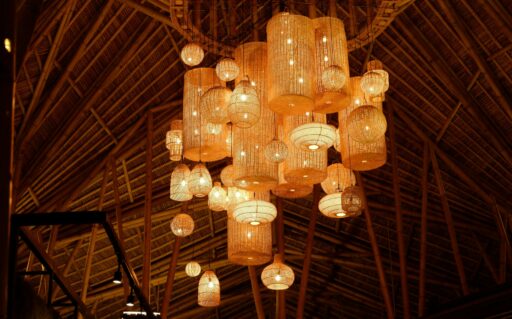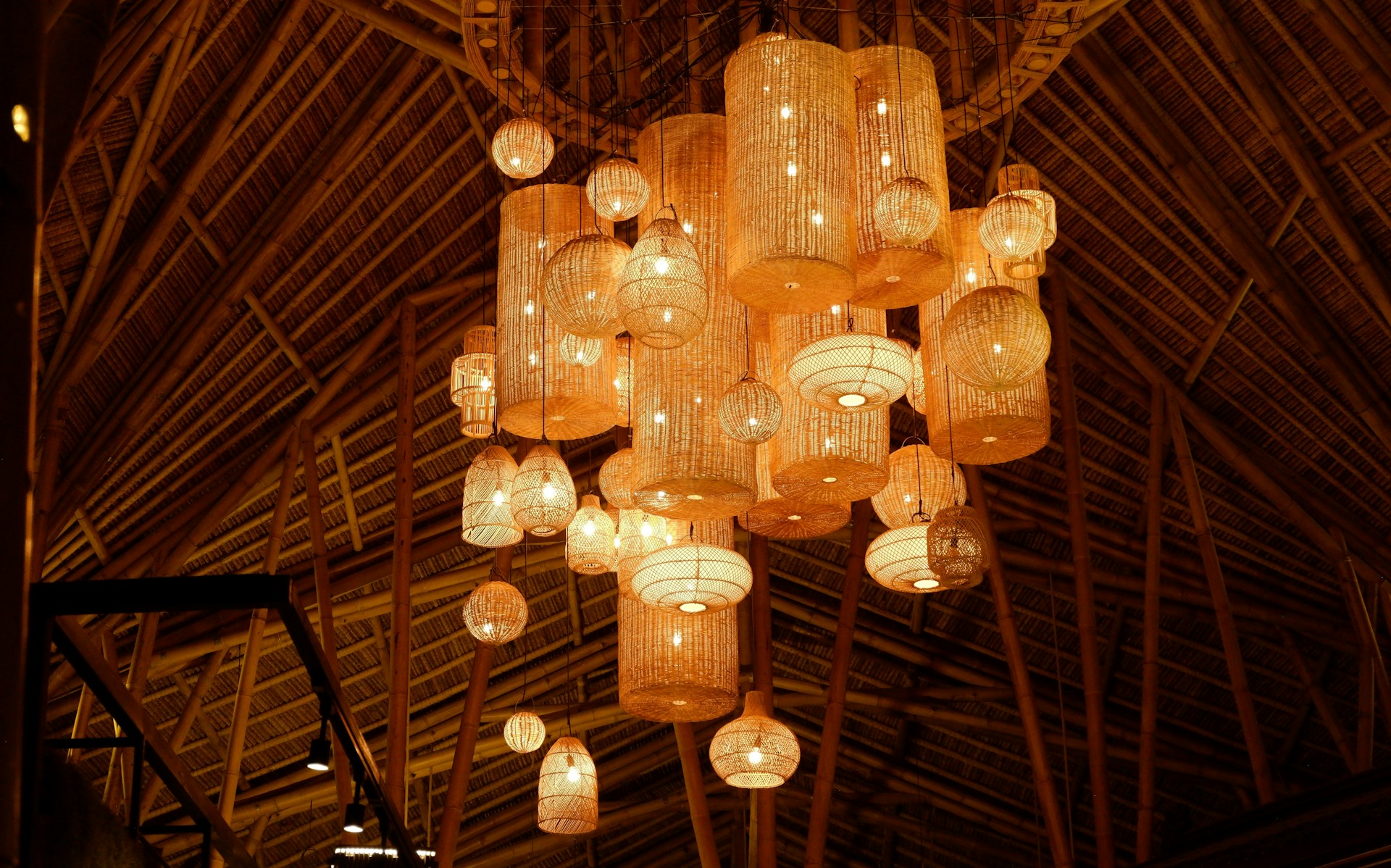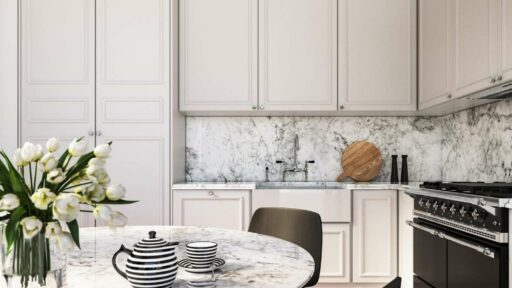Home extensions solve space problems, but they often create a different one—the new area feels like an add-on rather than part of the original house. The transition between old and new spaces feels awkward, and the extension somehow doesn’t blend with the rest of the home, no matter how well it matches the exterior.
Roof lanterns address this integration problem in ways that aren’t immediately obvious until you experience them. They don’t just add light—they change how extensions relate to the rest of the home and how people naturally use and move through these spaces.
Creating Vertical Interest That Draws You In
Extensions typically have flat ceilings at standard height, which works fine functionally but doesn’t create any sense of occasion or architectural interest. The space feels like what it is—a room tacked onto the house. Roof lanterns break this pattern by adding height and visual drama that makes the extension feel intentional and special.
The vertical element creates a focal point that draws people into the space. Rather than the extension being somewhere you pass through to get outside or a room that happens to be there, it becomes a destination. The light from above naturally pulls the eye upward and makes the space feel more important within the home’s hierarchy of rooms.
This vertical interest also helps the extension feel more connected to the original house by giving it architectural character that matches (or complements) features in older parts of the home. Houses often have ceiling height variations, architectural details, or interesting volumes in original rooms. Extensions with flat ceilings lack these qualities, but roof lanterns restore that sense of designed space rather than pure utility.
Light Quality That Matches the Rest of Your Home
Here’s the thing about extensions—they often have different light quality than the original house, and this subtle difference makes them feel separate. Original rooms have windows positioned based on the home’s orientation and surrounding structures, creating specific patterns of natural light throughout the day. Extensions get light from wherever windows can fit given neighboring properties and privacy concerns.
Roof lanterns bring natural light in from above, which creates illumination patterns similar to what you’d find in older parts of the home with better window placement. The light feels natural and changes throughout the day in ways that artificial lighting never quite replicates. This similarity in light quality helps the extension feel cohesive with the rest of the house.
The overhead light also reduces the extension’s dependence on artificial lighting during daytime. Original rooms in homes typically have enough natural light that you don’t need lights on during the day. Extensions with limited wall windows often require lights even in bright weather, which unconsciously signals “different space” to everyone using it. When the extension has natural light patterns similar to the rest of the home, it feels more integrated.
Creating Gathering Spaces People Want to Use
Extensions become truly part of the home when people naturally gravitate toward them rather than just using them when necessary. Roof lanterns help create this magnetic quality by making extensions feel open, bright, and pleasant to spend time in.
The light from above makes spaces feel larger and more open than the actual square footage suggests. This perception matters because extensions often can’t be huge due to property constraints or budget, but they need to feel generous and comfortable. Quality features like aluminium roof lanterns create this sense of openness through how they bring light into the space and add architectural volume overhead.
People naturally prefer spending time in well-lit spaces with interesting features. An extension with a roof lantern becomes where families gather for meals, where people linger over coffee, or where guests end up during parties. When the extension becomes a preferred space rather than just additional space, it’s truly functioning as part of the home rather than an appendage.
Blending Inside and Outside
Roof lanterns create connections to the sky and weather that help extensions feel less like boxes stuck onto houses. Watching clouds move past, seeing rain on the glass, noticing how the light changes as the sun moves—these connections to what’s happening outside make the space feel alive and dynamic.
This connection to outdoors helps extensions feel more like garden rooms or conservatories (in a good way) while still being fully functional living spaces. The psychological effect is that the extension doesn’t feel like it’s buried inside the building—it feels like a transitional space that bridges indoor and outdoor living.
For kitchen extensions, this connection to outside makes the space feel more appropriate for its function. Kitchens benefit from feeling connected to the outdoors, whether that’s for morning light while making breakfast or the sense of openness while cooking dinner. The roof lantern provides this connection even when wall windows face neighbors or lack good views.
Defining the Space Without Dividing It
Extensions need some definition to feel like distinct rooms rather than just extra floor area, but hard divisions defeat the purpose of creating open-plan living. Roof lanterns define the extension area through light and architectural feature without requiring walls or level changes that would separate spaces.
The pool of natural light under the roof lantern naturally defines a zone—typically over a dining table or kitchen island. This creates subtle room definition while maintaining the open flow that makes extensions valuable. People can see and talk across the space easily, but there’s still a sense of the extension having its own character.
This definition helps the extension feel purposeful and designed rather than just added square footage. The roof lantern marks it as a special area within the home that deserves attention, similar to how bay windows or fireplaces define and elevate specific spaces in older homes.
Temperature and Comfort Balance
Extensions can feel different temperature-wise than the rest of the home—colder in winter, warmer in summer—which makes them feel separate and less comfortable. Modern roof lanterns with proper glazing and ventilation help regulate temperature, making the extension feel similar in comfort to original rooms.
The thermal performance means the extension doesn’t require running heating or cooling at different levels than the rest of the house. When all rooms feel similarly comfortable, the extension integrates better into daily use patterns. Nobody avoids the extension in summer because it’s too hot or in winter because it’s chilly.
Making the Extension Essential
The true test of whether an extension feels like part of the home is whether it becomes essential to daily life rather than just extra space. Roof lanterns help extensions pass this test by making them the kind of spaces where people naturally want to be.
When the extension becomes the room where morning coffee happens, where family meals take place, or where everyone ends up in the evening, it’s truly integrated into the home. The architectural interest, natural light quality, and sense of openness that roof lanterns provide all contribute to creating spaces that feel central to home life rather than peripheral additions.
Home extensions solve space problems, but they often create a different one—the new area feels like an add-on rather than part of the original house. The transition between old and new spaces feels awkward, and the extension somehow doesn’t blend with the rest of the home, no matter how well it matches the exterior.
Roof lanterns address this integration problem in ways that aren’t immediately obvious until you experience them. They don’t just add light—they change how extensions relate to the rest of the home and how people naturally use and move through these spaces.
Creating Vertical Interest That Draws You In
Extensions typically have flat ceilings at standard height, which works fine functionally but doesn’t create any sense of occasion or architectural interest. The space feels like what it is—a room tacked onto the house. Roof lanterns break this pattern by adding height and visual drama that makes the extension feel intentional and special.
The vertical element creates a focal point that draws people into the space. Rather than the extension being somewhere you pass through to get outside or a room that happens to be there, it becomes a destination. The light from above naturally pulls the eye upward and makes the space feel more important within the home’s hierarchy of rooms.
This vertical interest also helps the extension feel more connected to the original house by giving it architectural character that matches (or complements) features in older parts of the home. Houses often have ceiling height variations, architectural details, or interesting volumes in original rooms. Extensions with flat ceilings lack these qualities, but roof lanterns restore that sense of designed space rather than pure utility.
Light Quality That Matches the Rest of Your Home
Here’s the thing about extensions—they often have different light quality than the original house, and this subtle difference makes them feel separate. Original rooms have windows positioned based on the home’s orientation and surrounding structures, creating specific patterns of natural light throughout the day. Extensions get light from wherever windows can fit given neighboring properties and privacy concerns.
Roof lanterns bring natural light in from above, which creates illumination patterns similar to what you’d find in older parts of the home with better window placement. The light feels natural and changes throughout the day in ways that artificial lighting never quite replicates. This similarity in light quality helps the extension feel cohesive with the rest of the house.
The overhead light also reduces the extension’s dependence on artificial lighting during daytime. Original rooms in homes typically have enough natural light that you don’t need lights on during the day. Extensions with limited wall windows often require lights even in bright weather, which unconsciously signals “different space” to everyone using it. When the extension has natural light patterns similar to the rest of the home, it feels more integrated.
Creating Gathering Spaces People Want to Use
Extensions become truly part of the home when people naturally gravitate toward them rather than just using them when necessary. Roof lanterns help create this magnetic quality by making extensions feel open, bright, and pleasant to spend time in.
The light from above makes spaces feel larger and more open than the actual square footage suggests. This perception matters because extensions often can’t be huge due to property constraints or budget, but they need to feel generous and comfortable. Quality features like aluminium roof lanterns create this sense of openness through how they bring light into the space and add architectural volume overhead.
People naturally prefer spending time in well-lit spaces with interesting features. An extension with a roof lantern becomes where families gather for meals, where people linger over coffee, or where guests end up during parties. When the extension becomes a preferred space rather than just additional space, it’s truly functioning as part of the home rather than an appendage.
Blending Inside and Outside
Roof lanterns create connections to the sky and weather that help extensions feel less like boxes stuck onto houses. Watching clouds move past, seeing rain on the glass, noticing how the light changes as the sun moves—these connections to what’s happening outside make the space feel alive and dynamic.
This connection to outdoors helps extensions feel more like garden rooms or conservatories (in a good way) while still being fully functional living spaces. The psychological effect is that the extension doesn’t feel like it’s buried inside the building—it feels like a transitional space that bridges indoor and outdoor living.
For kitchen extensions, this connection to outside makes the space feel more appropriate for its function. Kitchens benefit from feeling connected to the outdoors, whether that’s for morning light while making breakfast or the sense of openness while cooking dinner. The roof lantern provides this connection even when wall windows face neighbors or lack good views.
Defining the Space Without Dividing It
Extensions need some definition to feel like distinct rooms rather than just extra floor area, but hard divisions defeat the purpose of creating open-plan living. Roof lanterns define the extension area through light and architectural feature without requiring walls or level changes that would separate spaces.
The pool of natural light under the roof lantern naturally defines a zone—typically over a dining table or kitchen island. This creates subtle room definition while maintaining the open flow that makes extensions valuable. People can see and talk across the space easily, but there’s still a sense of the extension having its own character.
This definition helps the extension feel purposeful and designed rather than just added square footage. The roof lantern marks it as a special area within the home that deserves attention, similar to how bay windows or fireplaces define and elevate specific spaces in older homes.
Temperature and Comfort Balance
Extensions can feel different temperature-wise than the rest of the home—colder in winter, warmer in summer—which makes them feel separate and less comfortable. Modern roof lanterns with proper glazing and ventilation help regulate temperature, making the extension feel similar in comfort to original rooms.
The thermal performance means the extension doesn’t require running heating or cooling at different levels than the rest of the house. When all rooms feel similarly comfortable, the extension integrates better into daily use patterns. Nobody avoids the extension in summer because it’s too hot or in winter because it’s chilly.
Making the Extension Essential
The true test of whether an extension feels like part of the home is whether it becomes essential to daily life rather than just extra space. Roof lanterns help extensions pass this test by making them the kind of spaces where people naturally want to be.
When the extension becomes the room where morning coffee happens, where family meals take place, or where everyone ends up in the evening, it’s truly integrated into the home. The architectural interest, natural light quality, and sense of openness that roof lanterns provide all contribute to creating spaces that feel central to home life rather than peripheral additions.








